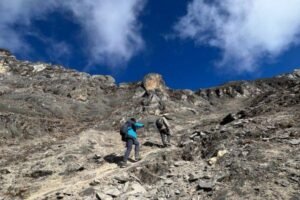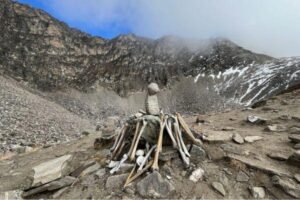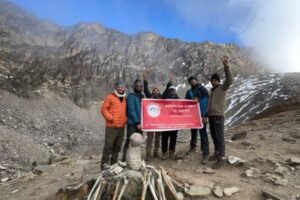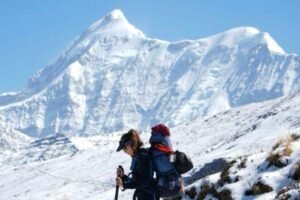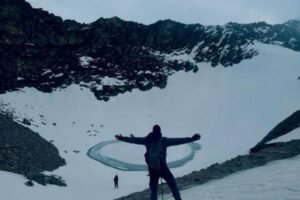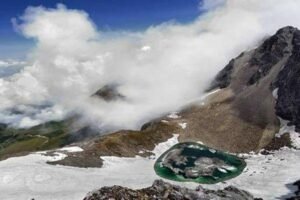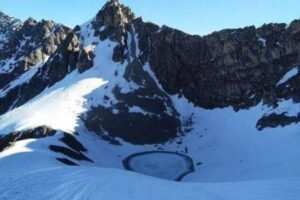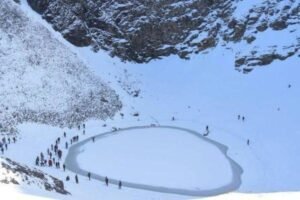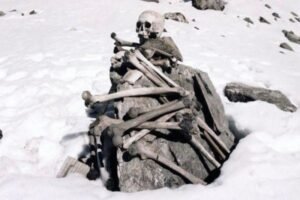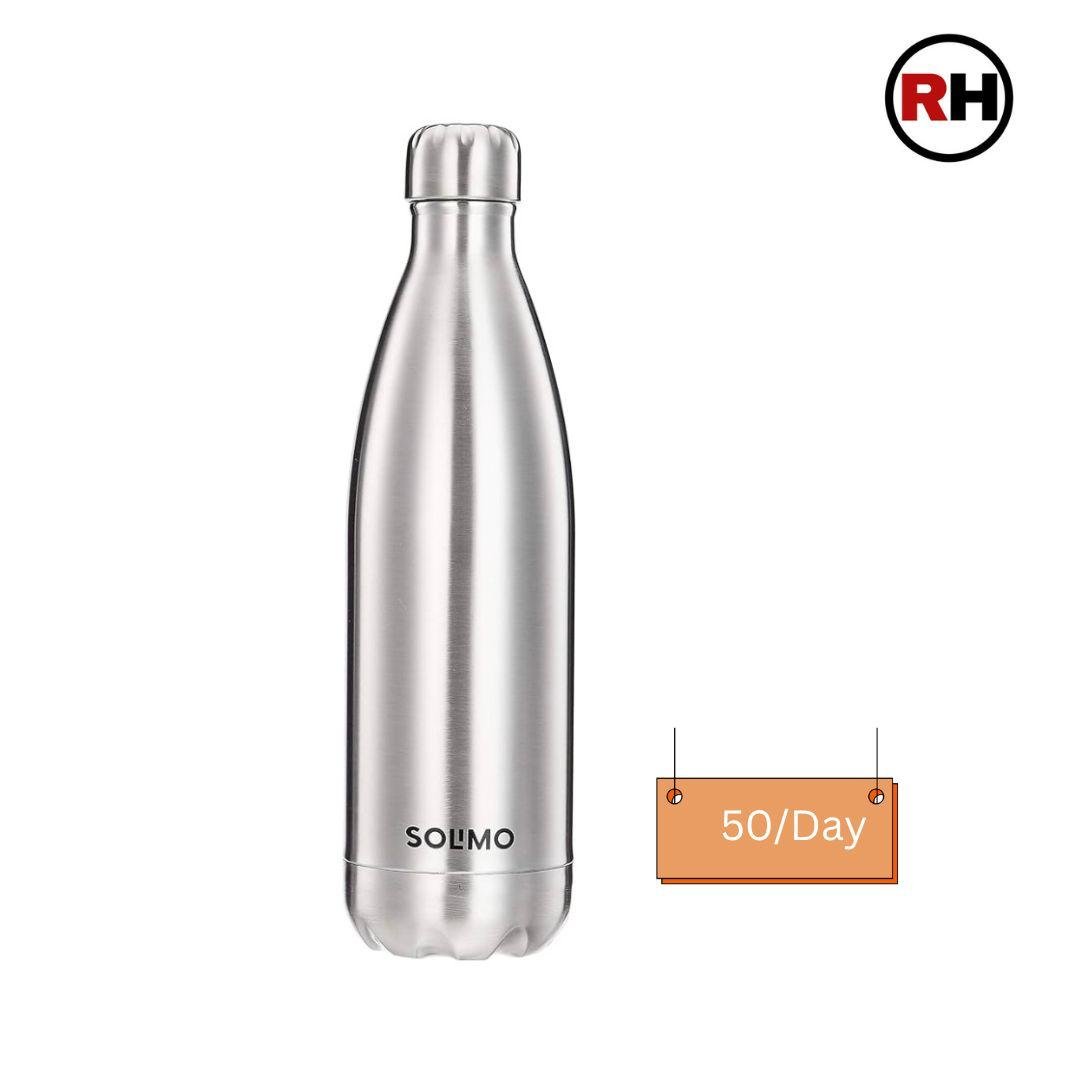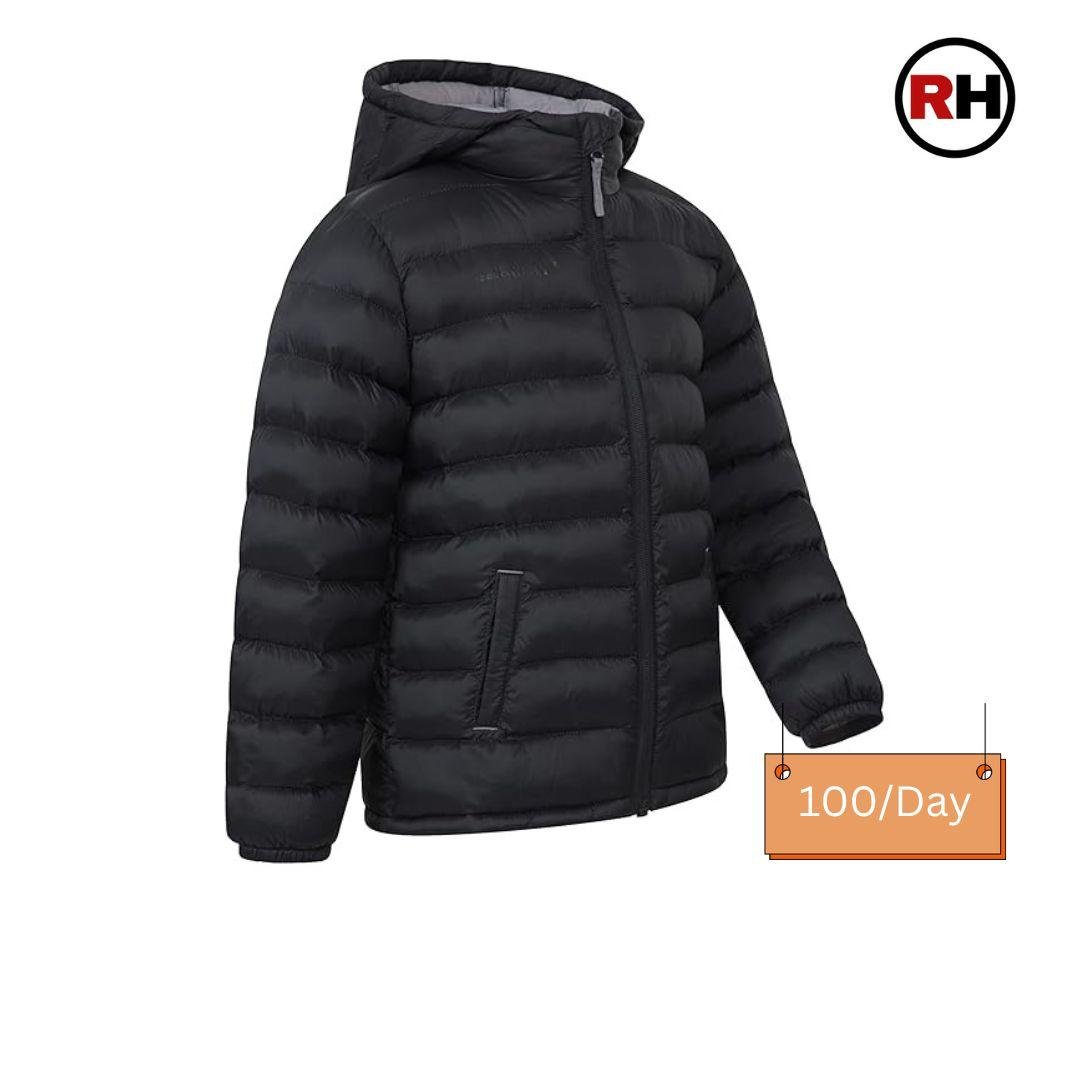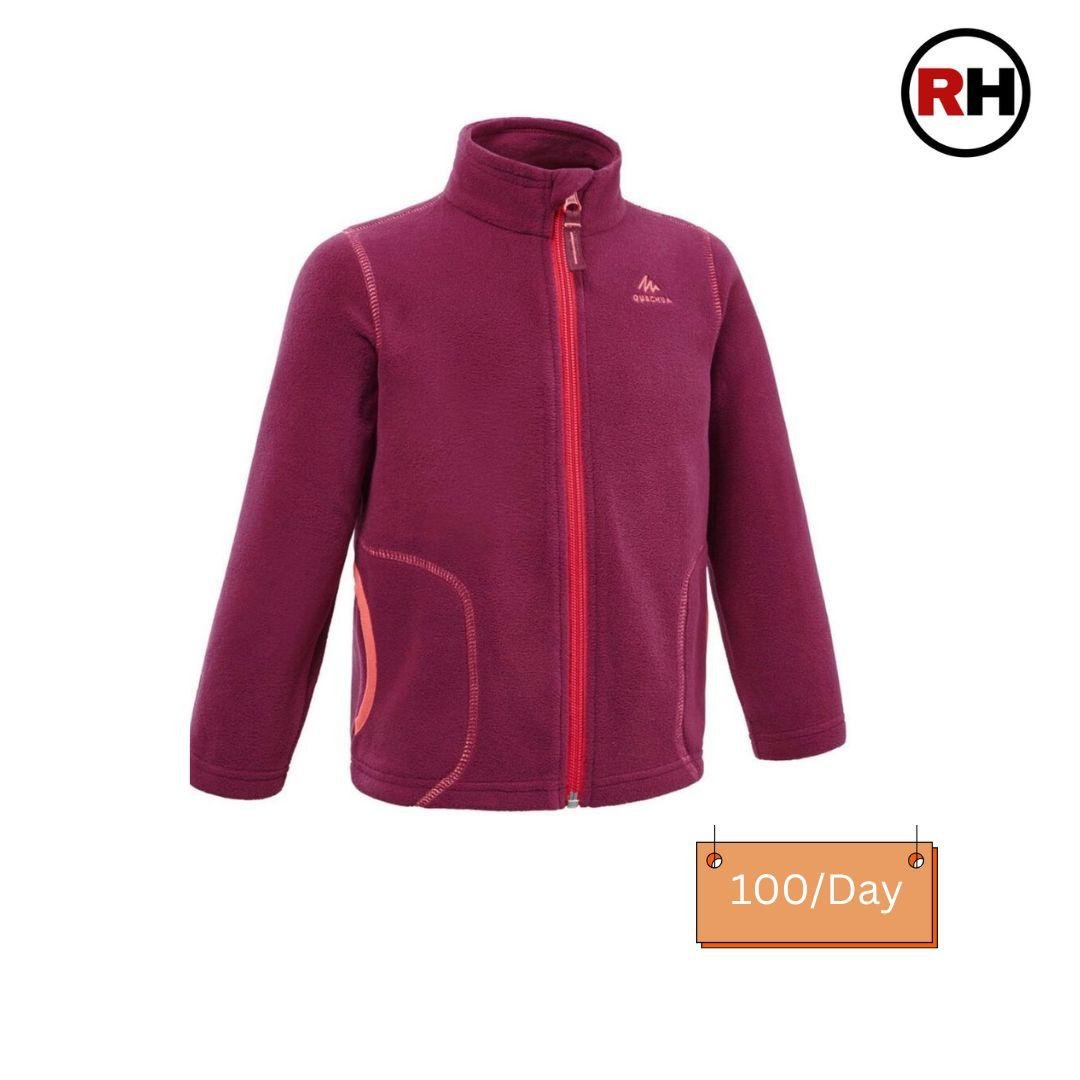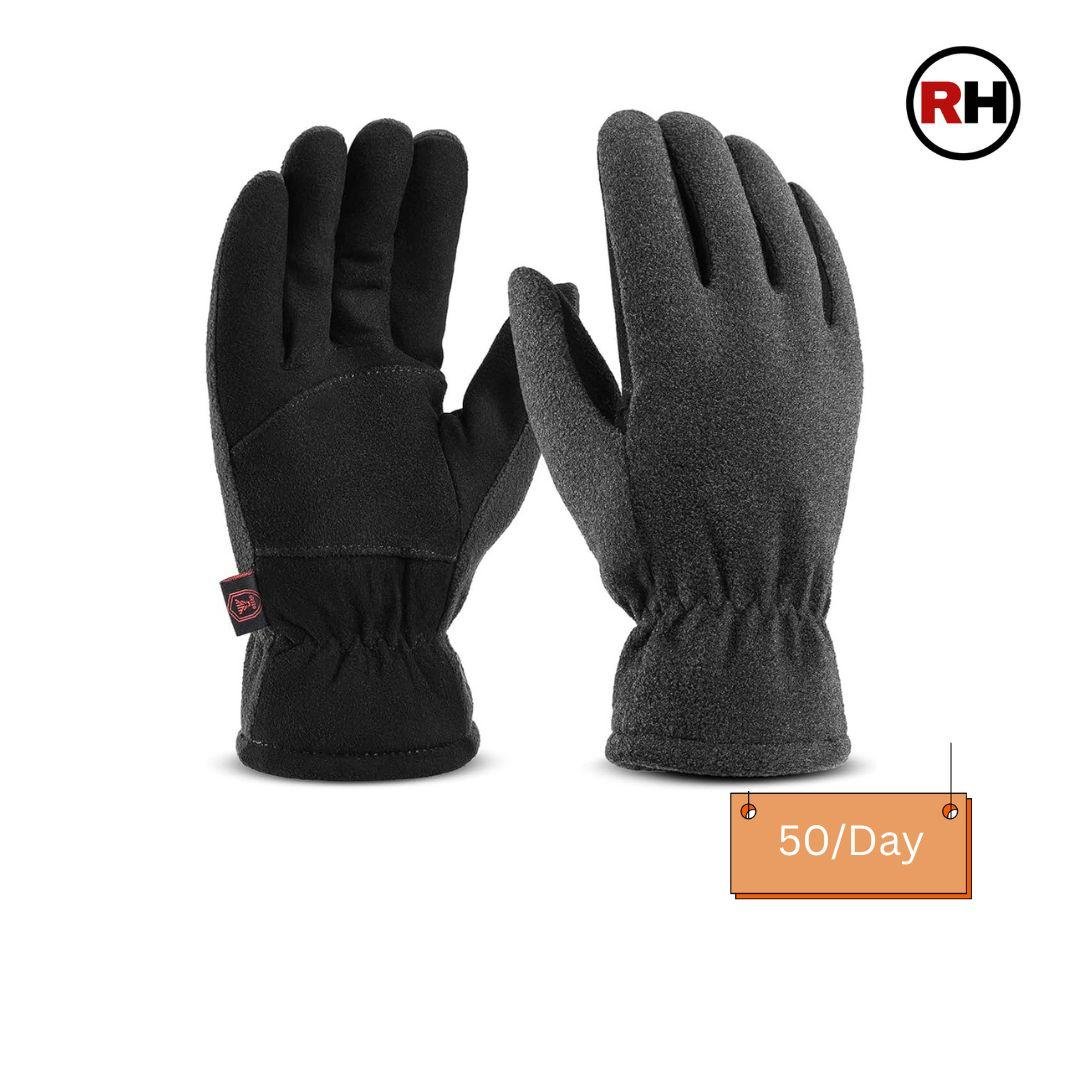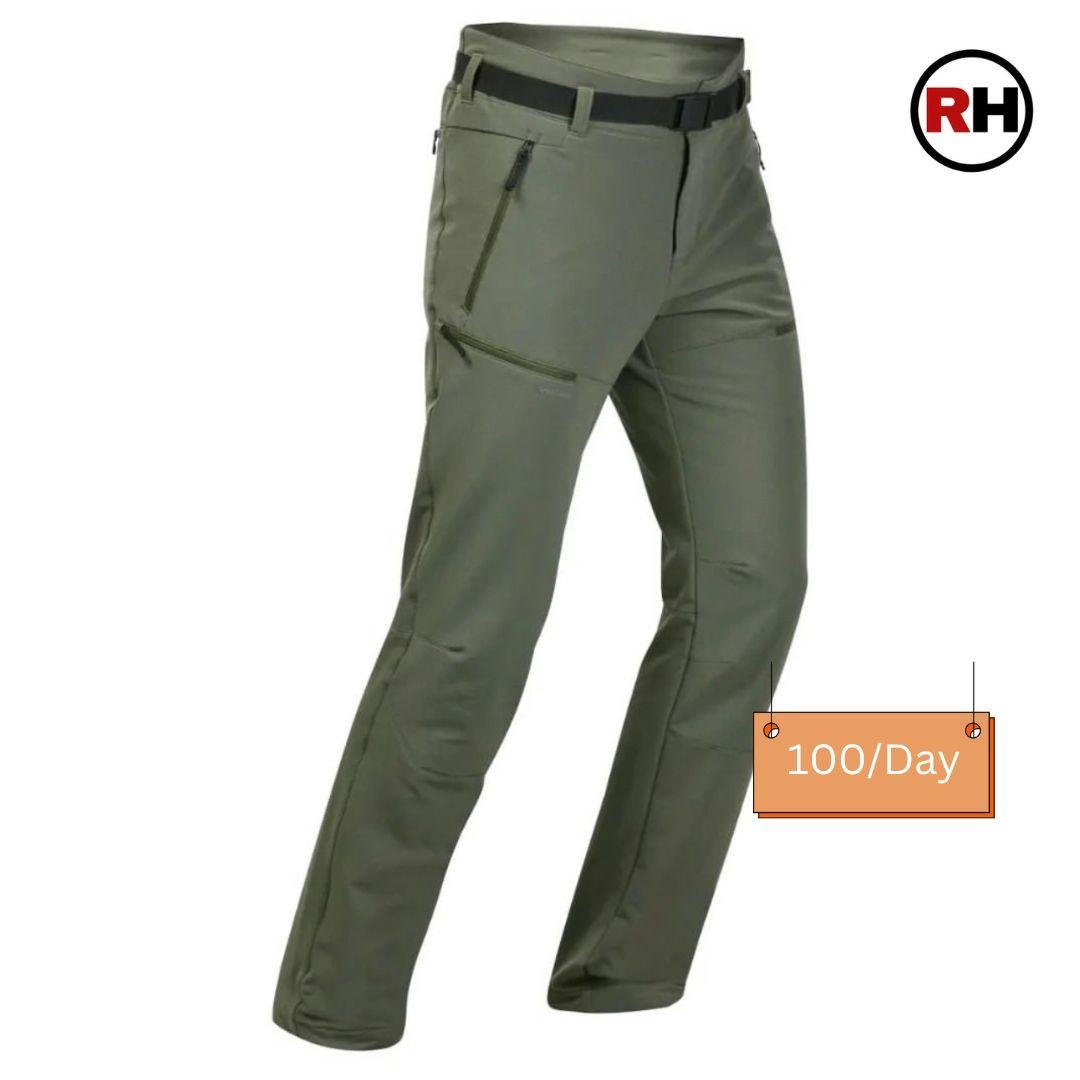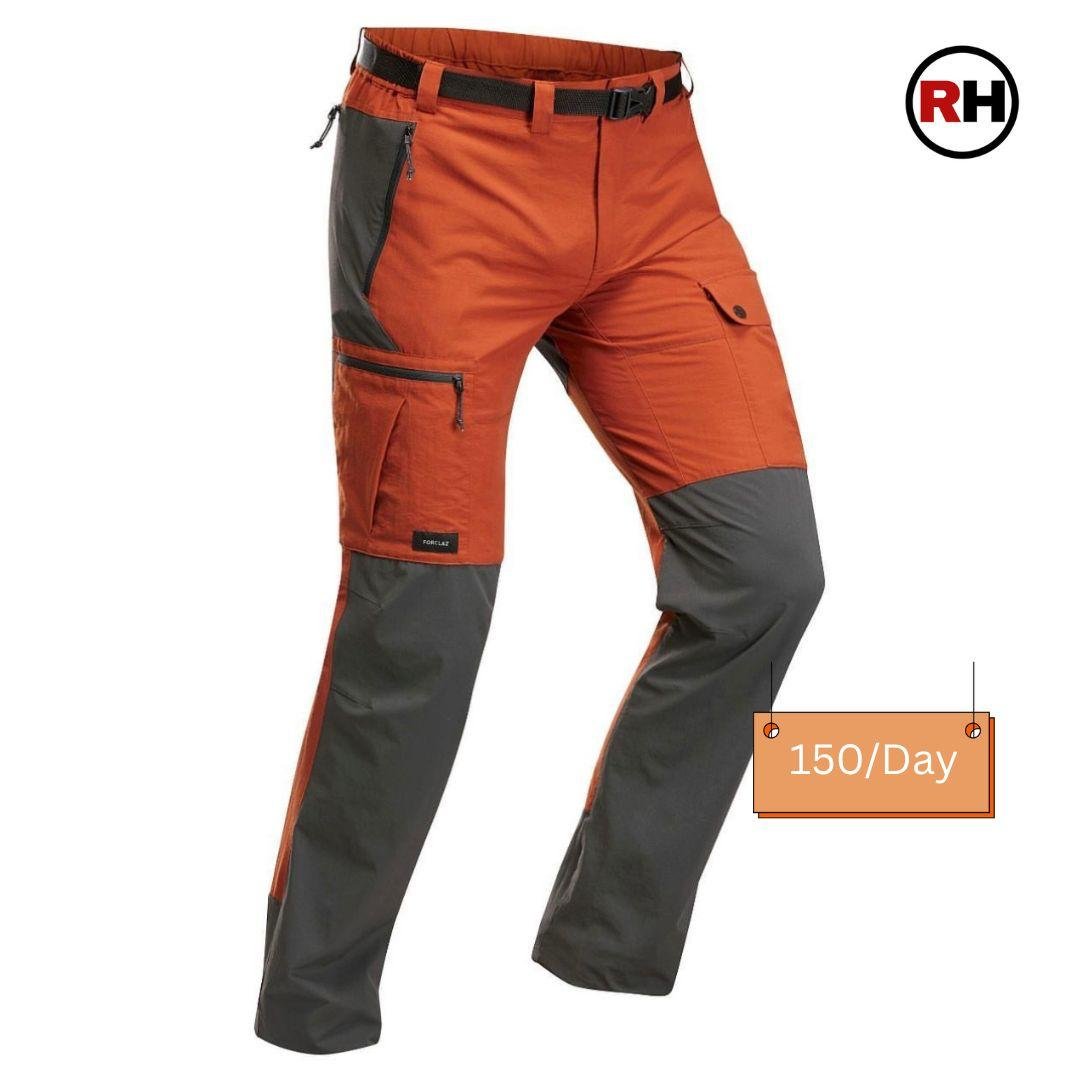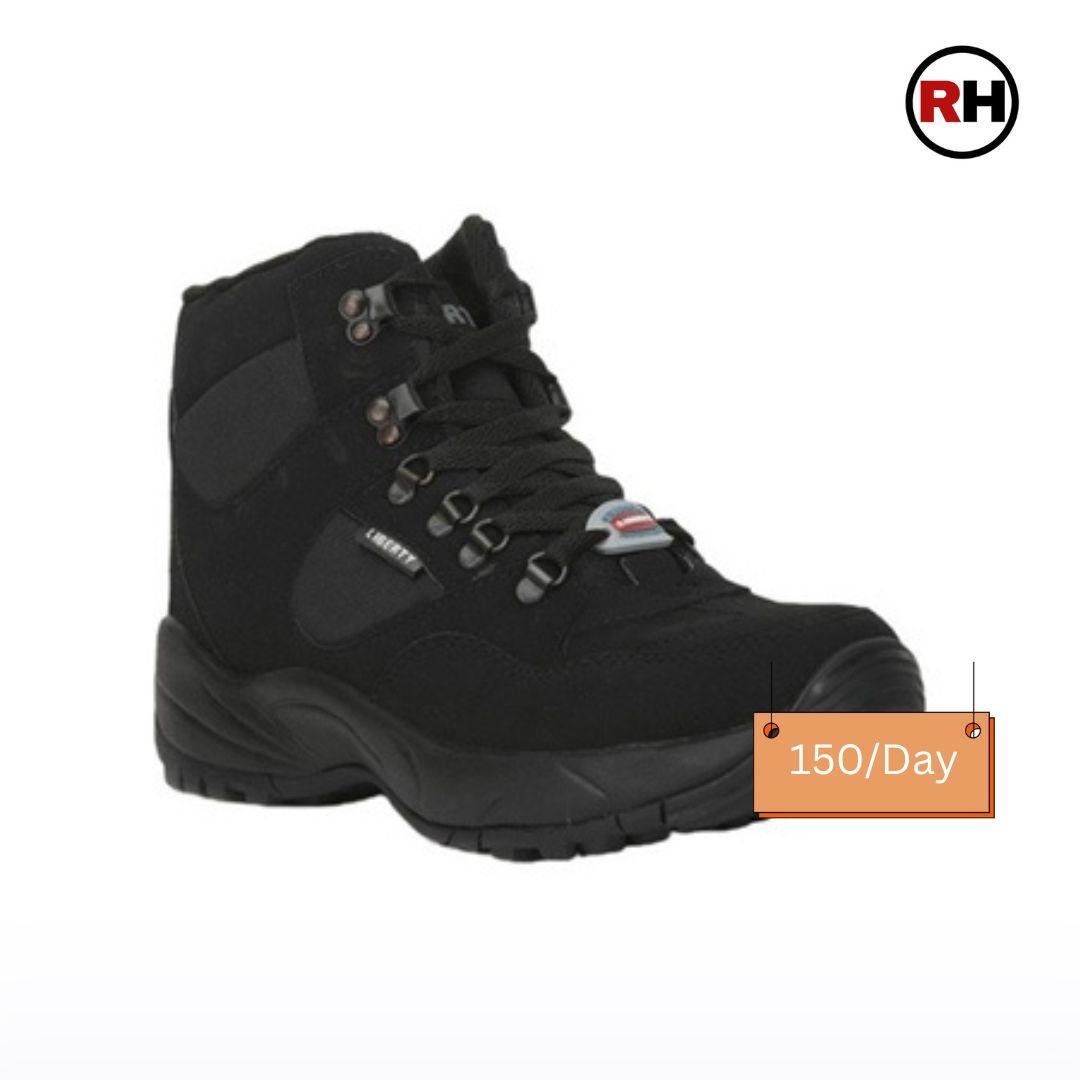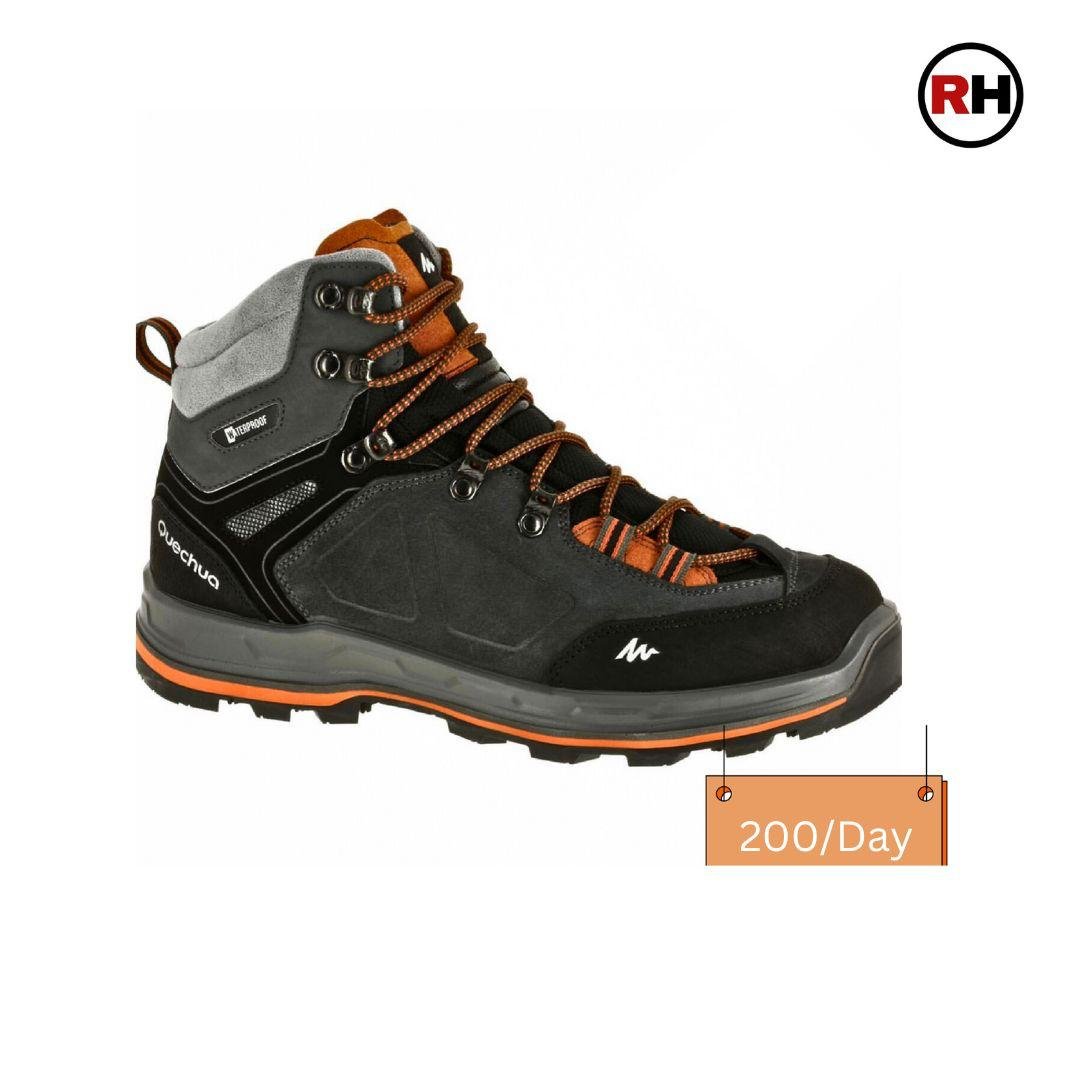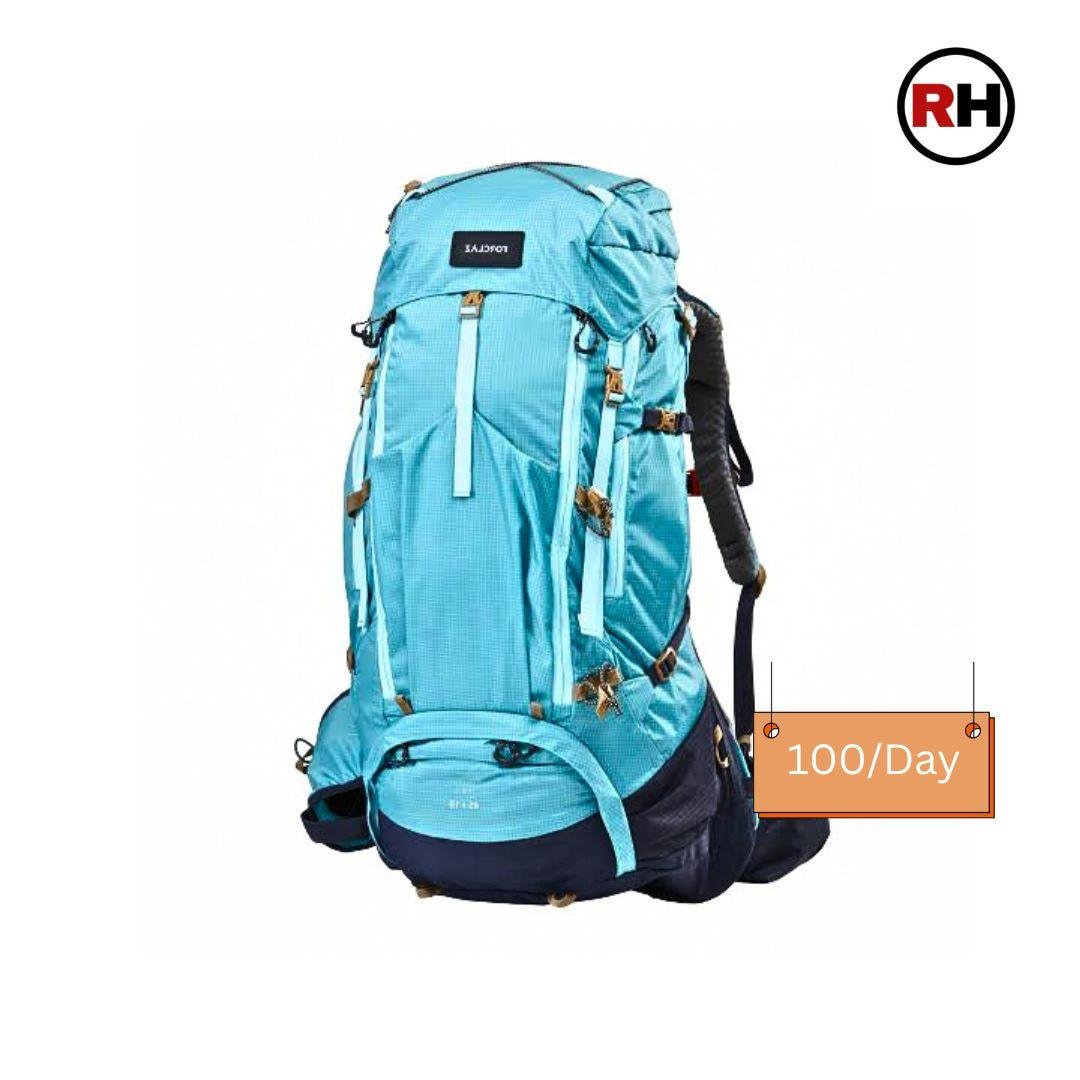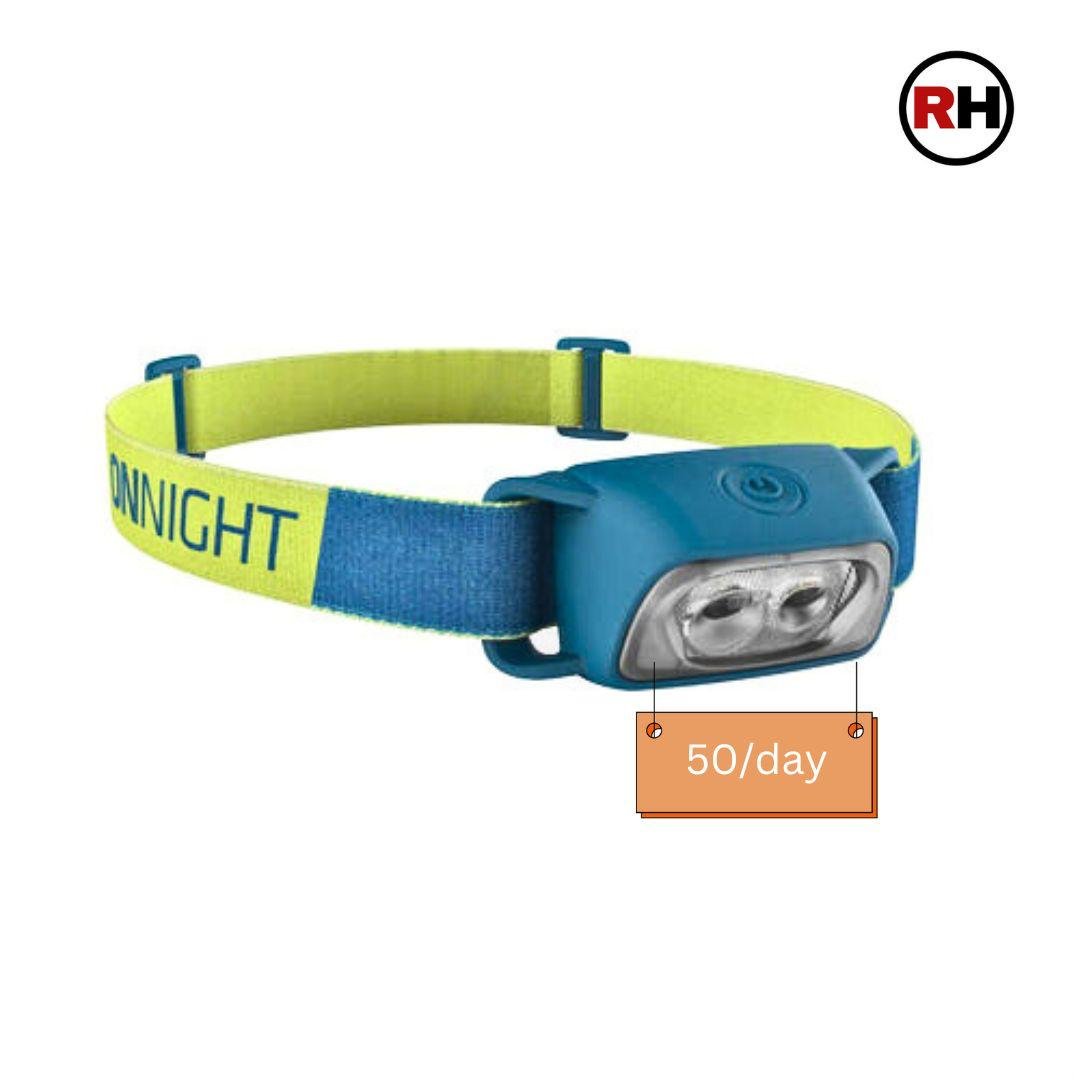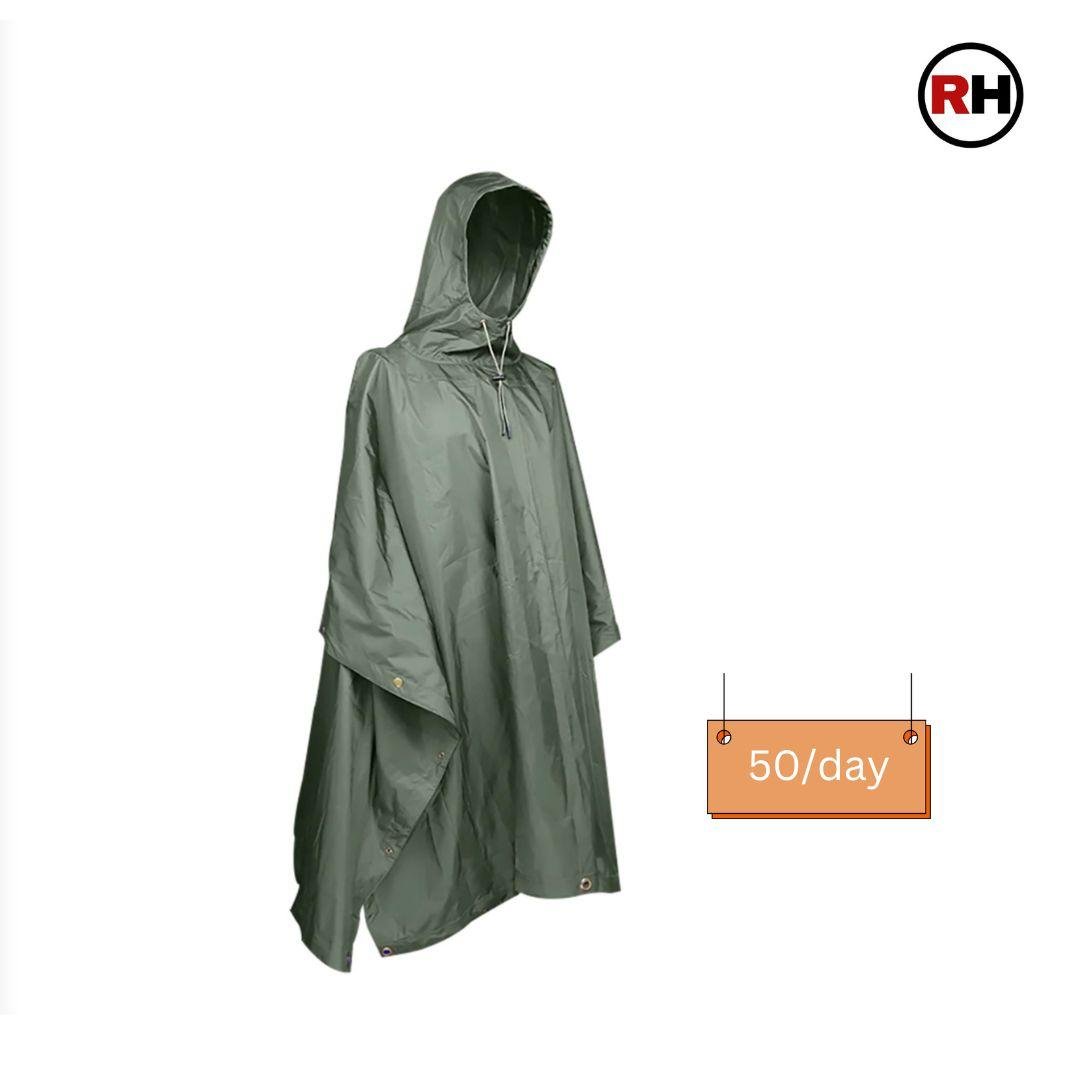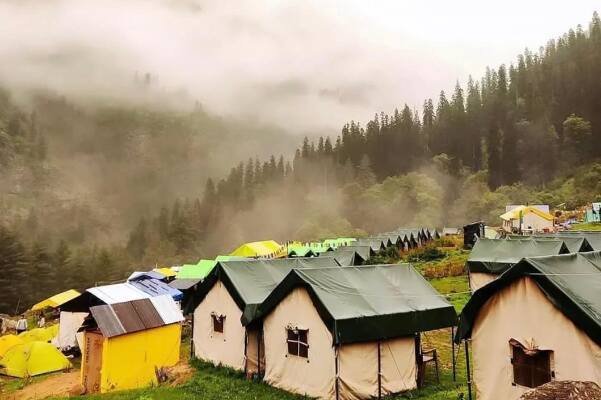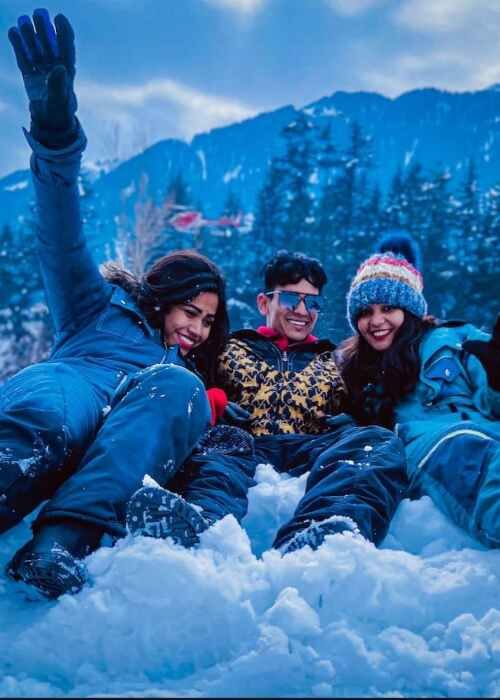Roopkund Trek
Join us for a beautiful Journey to the mountains
Trek Grade
Moderate
Highest Altitute
15,000 ft/4877 m
Category
Treks
Trek Duration
7 Night | 8 Days
Trekking Km
52 Km
Stays
Hotel/camp
transport
Rishikesh/Dehradun
trek region
Uttarakhand
Base camp
Lohajung
Meals
veg meal/egg
Trek Grade
Easy to Moderate
Highest Altitute
16,000 ft/4877m
Trek Duration
7 Night | 8 Days
Base camp
Lohajung
Meals
veg meal/ egg
Stays
Hotel/camp
transport
Rishikesh/Dehradun
trek region
Uttarakhand
Trekking Km
52 Km
How to Reach
Trek Grade
Trek Grade
Trek Grade
Trek Grade
Trek Grade
Overview
The Roopkund Lake trek is a captivating journey through the Garhwal Himalayas of Uttarakhand, India. At an altitude of around 16,499 feet, the lake itself holds a mysterious allure, with ancient skeletal remains found along its shores dating back centuries. The trek offers a breathtaking panorama of snow–capped peaks, verdant meadows, and dense forests, showcasing the rich biodiversity of the region, including rare
Himalayan fauna and flora. Interactions with local villagers add a cultural dimension to the trek, providing insight into their way of life. The route typically begins from Lohajung or Wan village, winding through picturesque landscapes and camping sites like Bedni Bugyal and Patar Nachauni before reaching the mystical Roopkund Lake. While moderately challenging, the trek rewards adventurers with unforgettable experiences and memories amidst the majestic beauty of the Himalayas.
Trek Highlights
On this trek, you would be enthralled by the number of sights and places that come along the way. Some of those key highlights are mentioned below:
- Mystery Lake: Roopkund Lake, often dubbed the “Mystery Lake” or “Skeleton Lake,” is shrouded in enigma due to the discovery of human skeletal remains scattered around its shores. These ancient relics, dating back to the 9th century AD, have puzzled historians and scientists for decades, sparking numerous theories about their origin. The eerie presence of these skeletons adds a compelling and mysterious element to the trek, igniting curiosity and intrigue among adventurers.
- Scenic Beauty:The Roopkund trek is a visual feast for nature enthusiasts and photographers alike, offering awe-inspiring vistas of towering snow-capped peaks, verdant meadows blanketed in vibrant hues of green, dense forests teeming with diverse flora, and sparkling alpine lakes reflecting the azure sky. Each step along the trek unveils breathtaking panoramas that evoke a profound sense of wonder and appreciation for the pristine beauty of the Himalayan landscape.
- Flora and Fauna: The region surrounding Roopkund is a biodiversity hotspot, teeming with a rich variety of flora and fauna unique to the Himalayan ecosystem. Trekking through this wilderness, you may encounter rare Himalayan birds soaring through the skies, elusive mountain goats like the Himalayan tahr gracefully navigating rocky terrain, and shy musk deer camouflaged amidst dense foliage. The abundance of wildlife and vibrant plant life adds an element of discovery and excitement to the trekking experience.
- High Altitude: Ascending to the lofty heights of Roopkund involves traversing challenging terrain and navigating steep inclines, leading trekkers to altitudes where the air becomes thinner, and oxygen levels decrease. This high-altitude environment presents physical demands that require proper preparation, fitness, and acclimatization to mitigate the risk of altitude sickness. Trekking at such elevations necessitates a gradual ascent, allowing the body to adjust to the changing atmospheric conditions and ensuring a safe and enjoyable journey to the summit.
- Cultural Experience:
Beyond its natural wonders, the Roopkund trek offers a cultural immersion into the lives of the indigenous communities inhabiting the remote mountain villages along the route. Interactions with local villagers provide insight into their traditional way of life, characterized by close-knit communities, ancient customs, and a deep reverence for the surrounding natural environment. Sharing stories around the warmth of a campfire, partaking in local cuisine, and witnessing age-old rituals enrich the trekking experience, fostering a sense of connection and appreciation for the rich tapestry of Himalayan culture.
Trekking Itinerary
Daily Hiking Schedule Of Roopkund trek
Day 1 Drive from Rishikesh to Lohajung
(250 km Drive, 9 hr approx)
Drive from Rishikesh to Lohajung
(250 km Drive, 9 hr approx)- Stay: Overnight stay at the Guest House in Lohajung.
- Meal: Tea snacks, Dinner.
- Altitude: Rishikesh (1120 ft), Lohajung (7700 ft).
- Distance: 250 Km
- Time Taken: 8-9 hrs approx.
- Trek Grade: By Road
Your journey would begin at Rishikesh, and upon arriving at Rishikesh, you would meet with the driver. Who would then drive you through the picturesque views of the Himalayan Mountains. The road will wind through the mountain until you start seeing the forest line. On the way, you will be mesmerized by the sight of the Garhwal Himalayas. The scenery will remain the same till you reach the first place, which is Devprayag. Here, you could stop and be spellbound at the sight of two rivers merging (sangam): Alaknanda and Bhagirathi. You could see the different colors of the river, as Alaknanda is mudy in color while Bhagirathi is greenish blue in color. Then the next place you would be crossing is Karnaprayag, which is one of the famous Panch Prayags. Finally, after driving for almost 8 hours, you would be amazed at the place you would be staying, as the place is surrounded by forest.
Day 2 Lohajung to Didna Village
(5km Drive, 6km Trek)
Lohajung to Didna Village
(5km Drive, 6km Trek)- Stay: Overnight stay at the Camp/homestay in Didna Village.
- Meal: breakfast, packed lunch, evening tea snacks, soup and dinner.
- Altitude: Lohagunj (7700 ft), Didna Village (8100 ft).
- Distance: By Road 5 km, By Trek 6 km.
- Time Taken: By Road 15-20 min , By Trek 4-5 hrs.
- Trek Grade: Gradual
On the second day, you would begin your travel with a short drive, followed by a trek later. On the road, you will be seeing forests, and when you begin your trek, you will be seeing rhododendron trees after crossing Raun Bagad Bridge. Once you are close to Didna Village, you will see houses made of stone, which is an old tradition. Then you would spend the night at Didna Village after having a delicious dinner.
Day 3 By Trek Didna Village to Ali Bugyal
(8km Trek, 6-7 hr approx)
By Trek Didna Village to Ali Bugyal
(8km Trek, 6-7 hr approx)- Stay: Overnight stay at Ali Bugyal in Camp.
- Meal: breakfast, packed lunch, evening snacks, shup and dinner.
- Altitude: Didna Village (8100 ft), Ali Bugyal (11,700 ft).
- Distance: 8Km
- Time Taken: 6-7 hrs approx
- Trek Grade: Gradual to Moderate
On Day 3, you will leave Didna behind and begin to walk through the stunning landscape of Tolpani Forest, which is dotted with old oak trees. On the way, you would be seeing local shepherds’ huts along with shepherds grazing their sheep, and as you started climbing, you would be seeing the forest of Birch. You will get to the Khobal top, where you will admire the peaks of Chaukhamba, Trishul, and Nanda Ghunti. Once you catch a glimpse of the peaks, you will then walk further and start seeing Ali Bugyal, where green grasslands are spread across the hill. Walk through the meadows and enjoy the scenery around you till you reach the camping site of Abin Kharak, which is the highest point of the trek.
Day 4 By Trek Ali Bugyal to Patar Nachauni via Bedni Bugyal
(7km Trek,6-7 hr approx)
By Trek Ali Bugyal to Patar Nachauni via Bedni Bugyal
(7km Trek,6-7 hr approx)- Stay: Overnight stay at Ali Bugyal / Patar Nachauni in Camp.
- Meal: breakfast, packed lunch, snaks, soup and dinner.
- Altitude: Ali Bugyal (11,700 ft), Patar Nachauni (12,850 ft).
- Distance: 7 Km
- Time Taken: 6-7 hrs approx
- Trek Grade: Moderate to Difficult
Day 4 marks the day when you will walk through the Bedni Bugyal. From the top of Bedni Top, you will be close to Mount Nanda Ghunti, Trishul, and Mrigthuni. On the trail, you would pass through Bedni Kund and Nanda Devi Temple, which are very auspicious places. At the Bedni Kund, you could see the reflection of Mount Trishul, and you could also see flowers in the middle of the meadows. Doliadhar, which marks the end of Bedni Bugyal and the start of the tree line. Once you have enjoyed the scenic vistas at the top of Bedni Bugyal, from Bedni Bugyal, continue your descent towards Patar Nachauni, following the well–defined trail through meadows and forests. Along the way, keep an eye out for wildlife such as Himalayan birds and mountain goats that inhabit the area. Finally, arrive at Patar Nachauni, a scenic campsite nestled amidst towering mountains and lush meadows, where you can relax and unwind after a day of trekking.
Day 5 By Trek Patar Nachauni to Bhagwabasa
(4 km Trek/5-6 hr approx)
By Trek Patar Nachauni to Bhagwabasa
(4 km Trek/5-6 hr approx)- Stay: Overnight stay at Bhagwabasa in Camps .
- Meal: breakfast, packed lunch, and dinner.
- Altitude: Patar Nachauni (12,850 ft), Bhagwabasa(14,150 ft).
- Distance: 4 km
- Time Taken: 5-6 hrs approx.
- Trek Grade: Moderate to Difficult.
The trek route from Patar Nachauni to Bhagwabasa presents trekkers with a challenging yet exhilarating journey through the rugged terrain of the Himalayas. Starting from the picturesque campsite of Patar Nachauni, nestled amidst lush meadows and towering peaks, the trail gradually ascends through alpine forests and open meadows towards the sacred Kalu Vinayak Temple. From there, the path steepens, leading trekkers through rocky terrain and moraine fields, with occasional patches of snow, as they gain altitude towards Bhagwabasa. The air becomes thinner, and the landscape transforms into a barren yet awe–inspiring wilderness, offering panoramic views of the surrounding mountains. Along the way, trekkers may encounter mountain wildlife such as Himalayan birds and ibex. After several hours of trekking, they finally reach Bhagwabasa, a high–altitude campsite situated at around 14,000 feet, where they can rest and recharge amidst the stunning beauty of the Himalayan landscape.
Day 6 By trek Bhagwabasa to Roopkund Lake and return Patar Nachauni
(10 km/7-8 hrs approx)
By trek Bhagwabasa to Roopkund Lake and return Patar Nachauni
(10 km/7-8 hrs approx)- Stay: Overnight stay at Patar Nachauni in Camps.
- Meal: breakfast, packed lunch, and dinner.
- Altitude: Bhagwabasa(14,150 ft),Roopkund(16,000ft)
- Distance: 10 km
- Time Taken: 7-8 hrs approx
- Trek Grade: Moderate to Difficult
And then day 5th, the day we were waiting for the most in this entire trek, Yes, waiting to see that mysterious “Roopkund Lake“. The trek route from Bhagwabasa to Roopkund Lake and back to Patar Nachauni offers an unforgettable adventure through the rugged terrain of the Himalayas.
Departing from the high-altitude campsite of Bhagwabasa, trekkers embark on a challenging ascent towards the mystical Roopkund Lake, known for its enigmatic human skeletal remains dating back centuries. The trail winds through rocky terrain and moraine fields, with breathtaking views of snow-capped peaks and glacial valleys.
As trekkers approach Roopkund Lake, the landscape becomes increasingly barren, with patches of snow and ice adding to the surreal ambiance of the surroundings. Upon reaching Roopkund Lake, trekkers are greeted by the crystal-clear waters of the lake and the eerie sight of ancient skeletons scattered along its shores.
After exploring the lake and soaking in its mystique, trekkers retrace their steps back to Bhagwabasa, where they can rest and reflect on their journey amidst the serene beauty of the Himalayas.
Day 7 By Trek Patar Nachauni to Wan, By Road Wan to Lohagunj
( 15 km Trek, 13 km Drive/ 9-10 hrs approx)
By Trek Patar Nachauni to Wan, By Road Wan to Lohagunj
( 15 km Trek, 13 km Drive/ 9-10 hrs approx)- Stay: Overnight stay at the Guest House/Homestay in Lohajung.
- Meal: breakfast, packed lunch, and dinner.
- Altitude: Patar Nauhauni(12,850 ft), Wan (8000 ft), Lohajung (7700 ft).
- Distance: By Trek 15 km. By Road 13 km
- Time Taken: By Trek 9-10 hrs approx., By Road 1 hr
- Trek Grade: Gradual
This is the last day of your trek; if you look carefully, you might recognize some walnut and pear trees. The trail goes downhill through the forest till you pass the Nile Ganga River by bridge.
As you come close to Wan village, you will see thousands of years-old Cypress trees, which look amazing. From Wan Village, you will then begin your road trip towards Lohagunj, which takes just 1 hour.
At Lohagunj, you will then be spending the night, thiswill be your last day of sleeping near the forest and mountains.
Day 8 By road, Lohagunj to Rishikesh
( 250 km 8-9 hrs approx)
By road, Lohagunj to Rishikesh
( 250 km 8-9 hrs approx)- Meal: Tea
- Altitude: Lohagunj (7700 ft), Rishikesh (1120 ft)
- Distance: 250 km
- Time Taken: 8-9 hrs approx.
- Trek Grade: By Road
- Stay is included on all days of the trek (from Lohajung to Lohajung). You will be staying in tents on a double sharing basis.
- Transport charges from Rishikesh to Lohajung and return.
- All meals from dinner at Lohajung on Day 1 to tea and coffee on Day 6 are included. Meals are simple, nutritious and vegetarian.
- All the trek equipment will be included like a sleeping bag, kitchen & dining tent, utensils, mattress, tent, toilet tent, and crampon (if needed).
- First aid medical kits, oxygen cylinder and stretcher.
- All fuel charges, toll taxes and needed forest entry fees along with permits.
- Mountaineering qualified and professional trek leader, guide, cook and support staff.
- GST 5% (it is Mandatory)
- Any emergency evacuation charges
- Any services that are not mentioned in the cost inclusion section.
- Any Meals/accommodation beside the itinerary or not mentioned in the program.
- Mules or porters to carry personal luggage.
Best time to do trek:
The best time to do the Roopkund Trek in the Indian Himalayas is typically during the summer months, from May to June, and then again from September to October. During these times, the weather is generally more stable, with clear skies and comfortable temperatures for trekking.
Spring ( May to June):
- In May and June, you’ll find lush greenery, blooming rhododendrons, and clear views of the surrounding peaks.
- However, keep in mind that this period can also experience occasional rain showers, so be prepared with appropriate gear.
- In September and October, after the monsoon season has passed, the skies are usually clearer, and the landscapes are still vibrant with greenery.
-
Note:
- Avoid trekking during the monsoon season (July to August) due to heavy rainfall, which can make the trails slippery and potentially dangerous. Additionally, during the winter months (November to April), the region.
- experiences heavy snowfall, making trekking difficult and potentially risky. Ultimately, the best time for the Roopkund Trek depends on your preferences, fitness level, and tolerance for weather conditions. Be sure to check the weather forecast and trail conditions before planning your trek.
How to Reach?
- By Bus: From Delhi, a regular bus service operates to Rishikesh. The main bus station in Delhi is ISBT Kashmere Gate, offering both AC and non-AC buses for the journey to Rishikesh.
- By Train: To reach Rishikesh from Delhi by train, you’ll first need to travel to Haridwar. From there, you can take a bus to Rishikesh, which is 35 km away. Haridwar serves as a major railway junction connecting Delhi to Rishikesh.
- By Air: The closest airport to reach Rishikesh by flight is Jolly Grant Airport, located approximately 25 km from the city. Regular flights from Delhi to Rishikesh are available. If you plan to arrive by flight, it’s advisable to schedule your arrival one day in advance.
What to Pack?
As a trekking, adventure, and travel company, we often receive inquiries from our trekkers, and one of the most frequent questions is about what to pack for the trek. Sometimes, it can be challenging to provide detailed explanations, so we’ve compiled a comprehensive packing list that will be beneficial for all trekkers heading to the Himalayas. When preparing for a trek and organizing your gear, it’s helpful to follow a systematic approach. You can start either from head to foot or foot to head, ensuring you cover all essentials and minimize the risk of forgetting important items. So, take it step by step and pack accordingly.
Footwear and Backpack
✅Trekking shoes with ankle support
✅Backpack with rain cover
✅Daypack with rain cover
Warm Layers and Clothing
✅Warm layers (Padded jackets )
✅3 layers for spring, summer, and monsoon treks (1 woolen sweater, 1 fleece, 1 padded jacket)
✅4 layers for autumn treks (1 woolen sweater, 2 fleece, 1 padded jacket)
✅5 layers for winter treks (1 pair of thermals, 1 woolen sweater, 2 fleece, 1 padded jacket)
✅3 Collared T-shirts (Wear one, carry two)
✅2 quick-dry trek pants (Wear one, carry one)
Accessories
✅Sunglasses
✅Sun cap, preferably with flaps
✅Waterproof gloves
✅Balaclava
✅Woolen socks (2-3 pairs od Dry + 1 pair of Woolen))
✅Headlamp
✅Trekking pole
✅Rain Jacket + pants/poncho
Toiletries
✅Suncreen
✅Moisturizer
✅Light towel
✅Lip balm or vaseline
✅Toilet paper (wet wipes are strictly not allowed on our treks)
✅Toothbrush
✅Toothpaste
✅Reusable plastic covers (for used clothes)
✅Trash bags (Carry out all your waste and leave no trace behind)
What to Pack?
As a trekking, adventure, and travel company, we often receive inquiries from our trekkers, and one of the most frequent questions is about what to pack for the trek. Sometimes, it can be challenging to provide detailed explanations, so we’ve compiled a comprehensive packing list that will be beneficial for all trekkers heading to the Himalayas. When preparing for a trek and organizing your gear, it’s helpful to follow a systematic approach. You can start either from head to foot or foot to head, ensuring you cover all essentials and minimize the risk of forgetting important items. So, take it step by step and pack accordingly.
- Footwear and Backpack
- Trekking shoes with ankle support
- Backpack with rain cover
- Daypack with rain cover
- Warm Layers and Clothing
- Warm layers (Padded jackets )
- 3 layers for spring, summer, and monsoon treks (1 woolen sweater, 1 fleece, 1 padded jacket)
- 4 layers for autumn treks (1 woolen sweater, 2 fleece, 1 padded jacket)
- 5 layers for winter treks (1 pair of thermals, 1 woolen sweater, 2 fleece, 1 padded jacket)
- 3 Collared T-shirts (Wear one, carry two)
- 2 quick-dry trek pants (Wear one, carry one)
- Accessories
- Sunglasses
- Sun cap, preferably with flaps
- Waterproof gloves
- Balaclava
- Woolen socks (2-3 pairs od Dry + 1 pair of Woolen))
- Headlamp
- Trekking pole
- Rain Jacket + pants/poncho
- Toiletries
- Suncreen
- Moisturizer
- Light towel
- Lip balm or vaseline
- Toilet paper (wet wipes are strictly not allowed on our treks)
- Toothbrush
- Toothpaste
- Reusable plastic covers (for used clothes)
- Trash bags (Carry out all your waste and leave no trace behind)
FAQS
FAQ – Roopkund Trek
When is the best time to do the Roopkund Trek?
The best time to do the Roopkund Trek is from late May to mid-June and September to mid-October. During May and June, you can enjoy snow on the trail and clear mountain views. It’s a great time if you want a snow trekking experience. In September and October, the weather is clear after the monsoon, the skies are blue, and the forests and meadows look fresh and green. The views of the mountains are also very beautiful. Avoid going during July and August because of heavy rain and slippery paths, and also avoid November to April as the route is closed due to snow. So, plan your trek in summer or autumn for the best experience.
Is prior trekking experience required for the Roopkund Trek?
How difficult is the Roopkund Trek?
The Roopkund Trek is considered moderate to difficult. It is not a technical trek, but it does require good physical fitness and mental strength, especially because of the high altitude and long walking hours.
Why it’s difficult:
● High altitude: The trek goes up to 16,000 feet, which can cause breathlessness or altitude sickness if you’re not used to it.
● Long days: You walk for 6 to 8 hours every day, sometimes on steep and rocky paths.
● Cold weather: The temperatures near Roopkund Lake can go below freezing, especially in the early morning.
● Snow and ice: In May and early June, there is often snow near the lake, which makes the final climb slippery and tiring.
In shortThe Roopkund Trek is a bit tough but doable with fitness and planning. It is not for complete beginners with no training, but if you’re healthy and ready to walk long distances, you can enjoy this beautiful and adventurous trek.
What is the duration and how long is the Roopkund Trek?
Will there be electricity at the campsites on the trek?
Is Roopkund trek safe?
Is a mobile network available on the Roopkund Trek?
Mobile network is mostly not available during the Roopkund trek. You may get some signal at Lohajung, the starting point, where Jio, Airtel, or BSNL might work. But once you start the trek, there is usually no network in all places. Sometimes, a very weak signal may come at higher points, but it’s not reliable. So, you should inform your family and friends before the trek that you will be out of network for a few days. It’s also a good idea to keep your phone on airplane mode to save battery and carry a power bank. Sharing the contact details of your trek coordinator can also help ensure important updates are communicated when needed.
Trek cost
Lohajung to Lohajung
Add ons
Total: ₹

What our Clients Say About Us






Blogs

Kedarkantha Trek
Kedarkantha is a popular trekking destination in the Uttarkashi district of Uttarakhand

Kedarkantha Trek
Kedarkantha is a popular trekking destination in the Uttarkashi district of Uttarakhand

Kedarkantha Trek
Kedarkantha is a popular trekking destination in the Uttarkashi district of Uttarakhand

Kedarkantha Trek
Kedarkantha is a popular trekking destination in the Uttarkashi district of Uttarakhand, India. It is a winter trek that offers breathtaking views of snow-capped mountains, dense forests, and frozen lakes. However, it is important to plan your trek at the right time of the year to ensure a safe and comfortable experience.
Blogs

Ravana Falls Sri Lanka | How to Reach, Best Time, and Travel Tips

Ravana Falls Sri Lanka | How to Reach, Best Time, and Travel Tips


